
We Tried It: What is It Like to Use Toothpaste Tablets?
What are toothpaste tablets, how do they work, and how are they more eco-friendly than paste?
Read More

Last Updated: August 23, 2022
Here’s how to go plastic free if you're just getting started — and how to level up if you've already made a plastic-free commitment.
Learning how to live without plastic can feel like an impossible task, but it’s easier than you may think to cut back on how much you consume. The majority of the most polluting plastic products can be replaced with a more sustainable option that works for both your family and the planet. Plus, by changing your habits you can help reduce global plastic waste which has reached 275 million tonnes a year and U.S. plastic waste which averages 37.8 million tonnes a year (the most per CAPITA of any country). U.S. Companies create 76 million pounds of plastic packaging every day. Yet only 9% of all plastic is recycled. The rest? Ends up in nature and our oceans.
“The easiest switches are the things you are excited about because you've found a solution that works for you or that solves another problem,” says Danielle Jezienicki, director of sustainability at Grove.
This Plastic-Free July, Grove will call plastic what it is: an addiction our industry has created that recycling alone won’t solve. Want to help stop plastic pollution in a few easy steps? The ideas below are a great way to get started — or to take your good habits a step further.
are used around the world per minute.
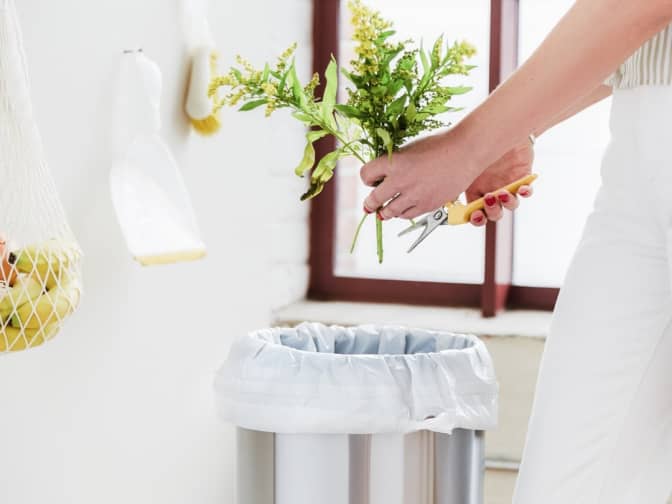
First step: Be mindful about what leaves your home.
A “waste audit” is a fancy term for peeking into your trash and recycling containers and taking note of what’s there. Every time you reach for the can, pay attention to what you're putting in. Do you have an abundance of clamshells? Snack bags and cereal box liners? Milk jugs or juice containers? Once you know what you are sending to the curb, you can tackle the most frequently spotted items first.
Go further: Track your trash and recycling for a full week.
You can use a simple handwritten tally taped to each can or a detailed spreadsheet (check out our version here, and make sure to create your own editable copy). When you put something in any bin (trash, recycle, compost), mark it down. And don’t forget to include the trash cans hiding in your bathroom, bedroom, or home office. At the end of your audit, you’ll have a handy roadmap for the swaps that will make the biggest difference in your home to reduce your plastic footprint.
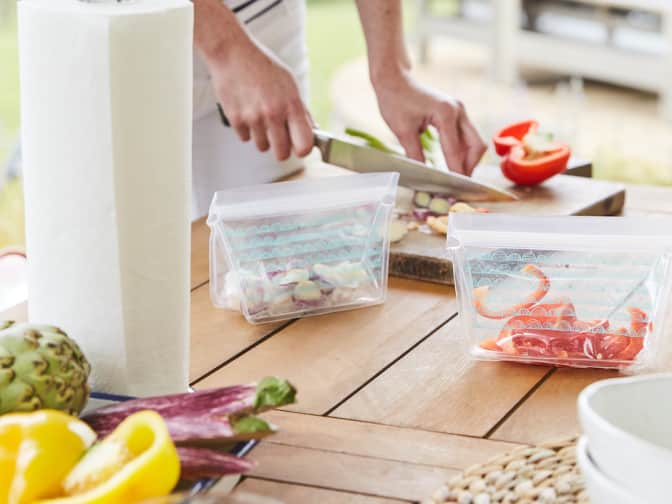
First step: Favor plastic-free produce.
Farmers markets are a great place to look, but many grocery stores will also have unpackaged fruits and veggies on the shelves. When you shop, use reusable produce bags or simply place items directly into your basket or cart.
Go further: Buy in bulk.
According to the Environmental Protection Agency, 30 percent of household waste in the U.S. comes from packaging, but many grocery stores have bulk bins full of pantry staples like grains, dried beans, and nuts. Ask your store if you can fill reusable containers from home. Many will allow fabric bags, glass jars, silicone bags, and more, as long as you get them weighed before you fill them up. If you can’t bring your own, you can refill the provided plastic bags or containers over and over.

First step: Create an easy to-go kit.
These essentials are ideal to keep in your bag, desk at work, or car so they are ready when you need them. They’re also very handy for school lunches and traveling! Depending on your needs, your kit may include:
Go further: Put takeout in your own container.
Bring a reusable container when you order out and ask if your meal can be placed inside. If the restaurant can’t fulfill your request, you can ask for your meal on a plate (or order “for here”) and then pack it up yourself to reduce plastic usage.
Grove Tip
If you’re ordering delivery or takeout a lot lately, make it clear you don’t need plastic cutlery or condiments, and consider asking for your salad dressed to prevent them from wasting a single-use plastic container.
Grabbing drinks? Opt for reusable growlers and glass containers over single-use aluminum crowlers or cans.

First step: Know what can be recycled in your area.
Roughly a quarter of all items collected through curbside recycling are actually trash. If it’s not listed as acceptable by your waste collection agency, don’t put it in the bin. “Aspirational” recycling or wishcycling can harm workers or machinery and degrade the value of the material, which makes it much more likely that recyclable materials will end up in a landfill instead. Some companies, like Grove, offer recycling programs for their products.
Go further: Minimize your recycling.
“Recycling really should be a last chance solution,” says Jezienicki. “It isn’t the happy ending we think it is.” The average person goes through 250 pounds of plastic each year, but only a measly 9 percent of plastic is actually recycled in the U.S., according to the EPA. Companies like Grove, who consciously try to reduce plastic in packaging and who work with partners (like rePurpose Global and Plastic Bank) to offset plastic production actually make a bigger impact than those who product plastic and promote recycling. By purchasing reusable and plastic-free products, our Grove community has avoided 4M pounds of plastic from entering nature and oceans. That's ... a lot of plastic that wasn't wasted just because people bought their normal household items a little bit differently.
When recycling is your only option, make sure there isn’t any residue left behind that can contaminate other materials or sentence it to the landfill because it's unclean.
Sustainability Stat
Even if plastic makes its way into the proper bin, it’s not recycled like a glass bottle or an aluminum can. Instead, it’s usually downcycled, which means it’s made into a lower-quality material that most often cannot be recycled again. Plastics that have the numbers 3-7 on them in the triangle arrows, in particular, are unlikely to be recycled at all.
When you buy plastic-free and plastic-reducing items, you're actually helping the plastic problem a lot more than by just recycling. Grove has avoided 4.06MM lbs of plastic as of 2021 by creating products in glass and aluminum containers.
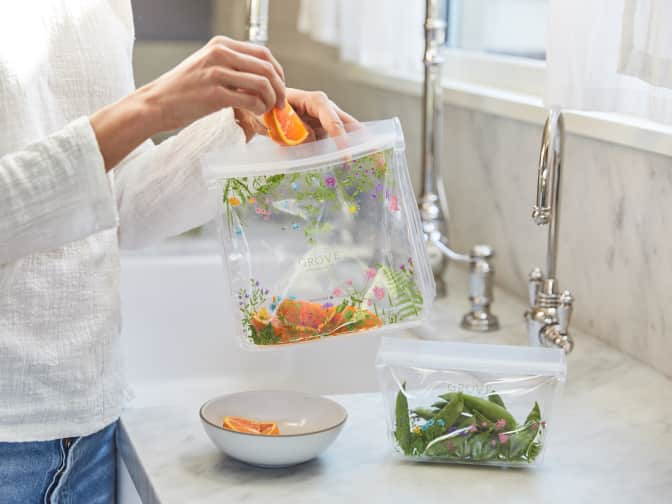
First step: Replace single-use plastic wrap and bags and opt for a reusable alternative.
Swap in Bee’s Wrap for cling film and reusable silicone storage bags for single-use zipper bags. Read a real person's review on switching to reusable storage here for more information before you decide to make the swap.
Go further: Slowly replace your old plastic containers as they break.
Rather than throwing out what you already have, take good care of your existing plastic containers by handwashing them and keeping them out of the microwave. When it’s time for a new one, reuse glass jars to store leftovers (Yep, you can even freeze food in them!), or upgrade to glass or metal storage containers.
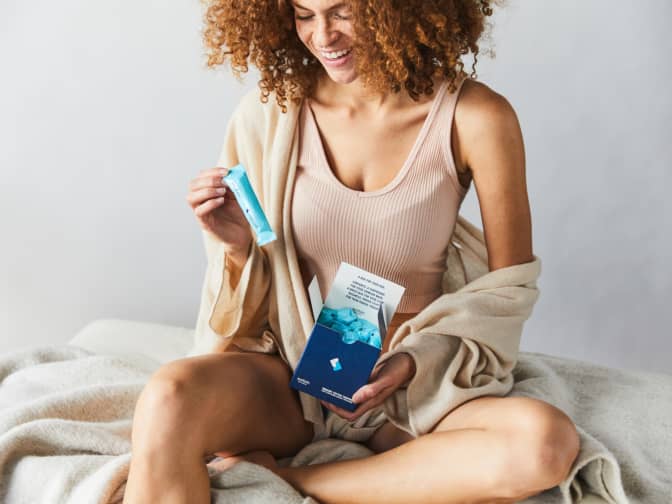
First step: Opt for tampons with cardboard or recyclable applicators or no applicator.
People in the U.S. bought 5.8 billion tampons in 2018. That’s a lot of waste when you consider that many conventional tampons are individually wrapped, enclosed in a plastic applicator, tethered to a polyester or polypropylene cord, and may even have plastic intermixed in the absorbent material. Try switching to 100-percent organic cotton tampons with cardboard applicators.
Go further: Have a zero waste period.
Instead of disposable tampons, pads, and liners, try out period underwear, a silicone menstrual cup, or reusable pads and liners. Over a 10-year period, one menstrual cup is estimated to create just six percent of the plastic waste that would be produced by using tampons and less than half a percent of the waste from using single-use pads.
Learn more about period underwear and how they work in this guide before you make the switch.
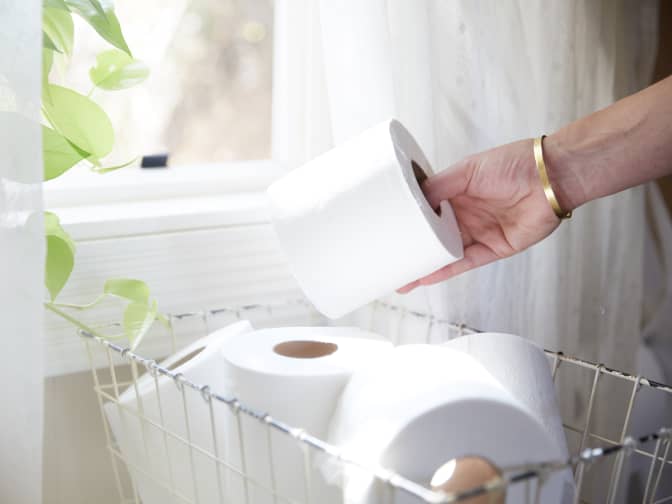
First step: Buy bare toilet paper rolls packed in cardboard.
The thin film plastic that encases most rolls is difficult to recycle and often ends up in the landfill. Buying tree-free toilet paper also saves trees and paper waste. How can toilet paper be tree-free, you ask? Alternative products at Grove use responsibly-sourced bamboo from small family farms in China, where bamboo is a native species. Plus, bamboo generates three times the amount of oxygen than the carbon emitted from transporting it overseas, so you can feel good about sourcing it from China.
Bonus points: Opt for tree-free paper towels without the plastic packaging while you're at it.
Go further: Install a simple bidet to replace “flushable” wipes.
Flushable wipes are often blamed for clogging municipal sewer pipes, and you’ll likely use less toilet paper with a bidet too. Win-win.
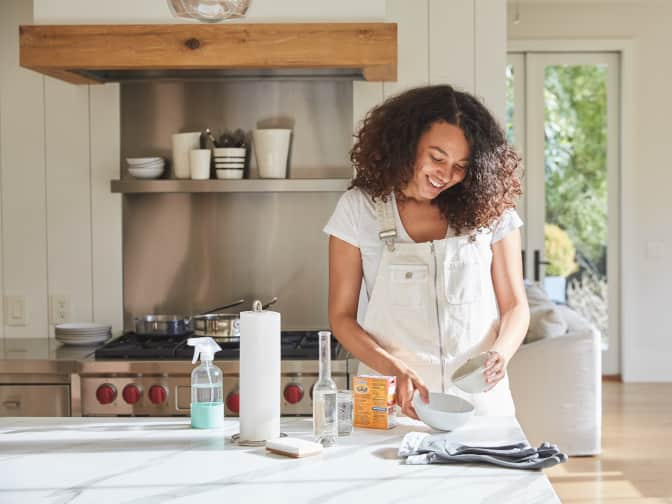
First step: Refill your cleaners.
Instead of buying a new bottle every time you run out, refill the containers you already have with bulk pouches or cleaning concentrates. At Grove, our lightweight refill pouches reduce your plastic use by 60 percent, and you don’t have to worry about recycling them. Simply request a prepaid shipping label, and we'll take care of the rest.
Go further: Don’t overlook the rest of your cleaning caddy.
When your plastic dryer sheets run out, replace them with wool dryer balls that speed drying time by up to 25 percent while reducing static. Use a cleaning cloth made with natural fibers or a bamboo brush for scrubbing. Opt for powder dishwasher detergent rather than individually wrapped tablets.
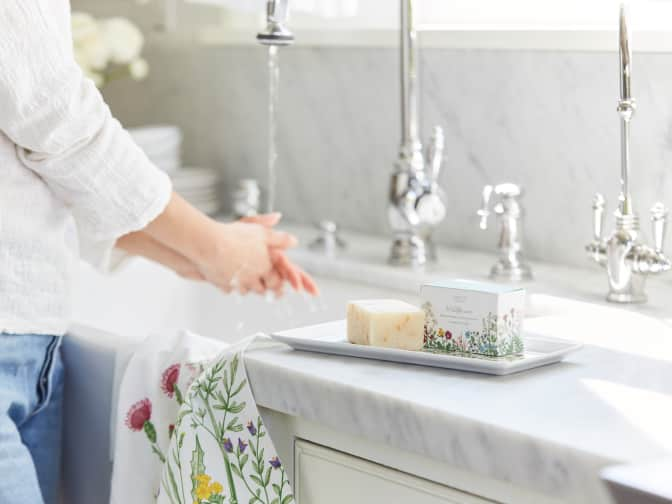
First step: Keep hands clean with bar soap packaged in recyclable cardboard or hand soap refills.
Wave goodbye to the hand soap bottles cluttering your cupboard. Instead, refill your favorite bottle you already purchased — or a sleek glass dispenser. Or suds up with a hydrating bar. If you go solid, don’t forget to use a soap saver or a soap dish with drainage to help prolong the life of bar soap.
Go further: Replace the items you reach for every day.
You don’t have to do this all at once — slowly build your new routine with personal care products packed in glass, metal, or cardboard as your existing products run out. From shampoo and conditioner bars, to plastic-free razor cartridges or a safety razor, to moisturizer and eye shadow, there are plenty of new planet-friendly favorites waiting to be discovered.
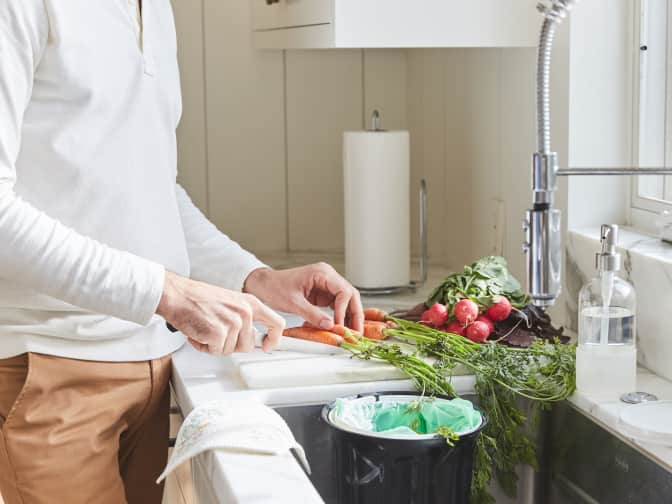
First step: Mind the bag.
You’ve already made note of what you throw out, but the plastic bag holding it all together is easy to overlook. Replace the liner in your trash can with a compostable or recycled plastic bag. Or better yet, Jezienicki recommends skipping it entirely. Going liner-free is particularly easy if you can compost messy food scraps — those tend to make the most mess in a trash can anyways.
Go further: Take a closer look at your everyday items.
Plastic often hides in unexpected places like tea bags, paper milk cartons, and chewing gum. The good news is that many of these hidden sources are easy to replace. For example, you can sip on loose leaf or brew tea bags that say they are compostable or made from 100 percent paper. If you’re unsure if an item contains plastic, contact the company and ask.
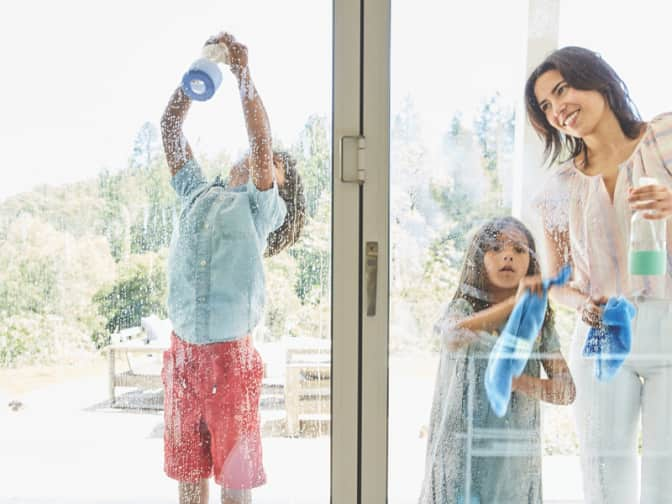
At Grove Collaborative, we're passionate about reducing plastic pollution and limiting its devastating effect on our oceans, wildlife, and human health. That's why we're completely plastic neutral in partnership with Plastic Bank. Being plastic neutral means that for every ounce of plastic you receive from Grove, we work with Plastic Bank to recover and recycle the same amount of plastic that would otherwise enter the ocean.
And why stop there? Given we can’t recycle our way out of this plastic crisis, Grove is moving Beyond Plastic to be 100% plastic-free by 2025. Every product we make and sell will be plastic-free, from our packaging to the products we carry from other brands. To explore all the ways Grove is working toward a healthier, more sustainable future, read about our sustainability efforts and partners at grove.co/sustainability.

What are toothpaste tablets, how do they work, and how are they more eco-friendly than paste?
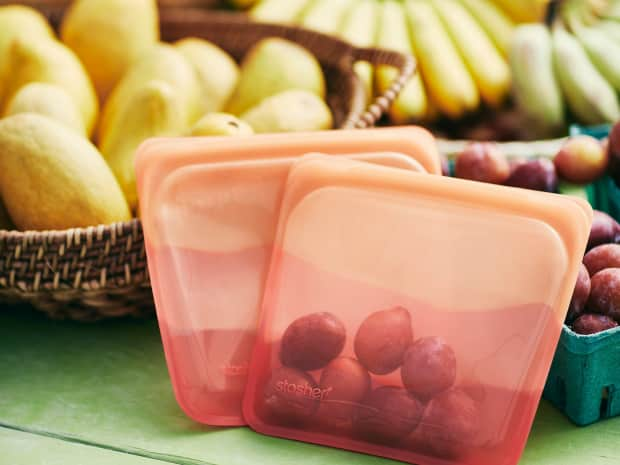
We've pulled the top 14 food storage containers as determined by Grove members. Find one for your needs.
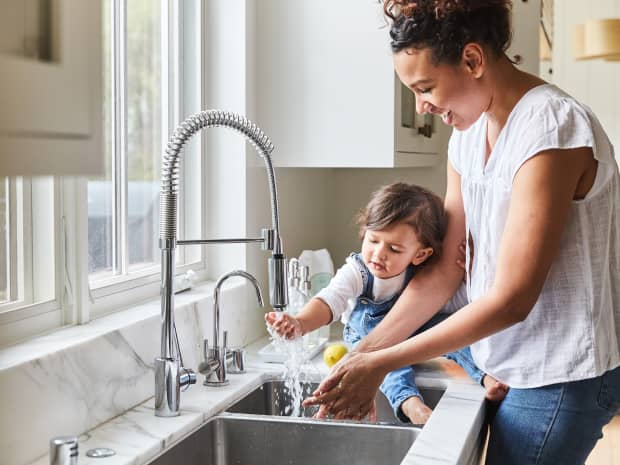
Alternatives to paper towels are everywhere — but are they all equally effective and eco-friendly?

These 11 bamboo products are not only great for the environment but also highly rated by our members.